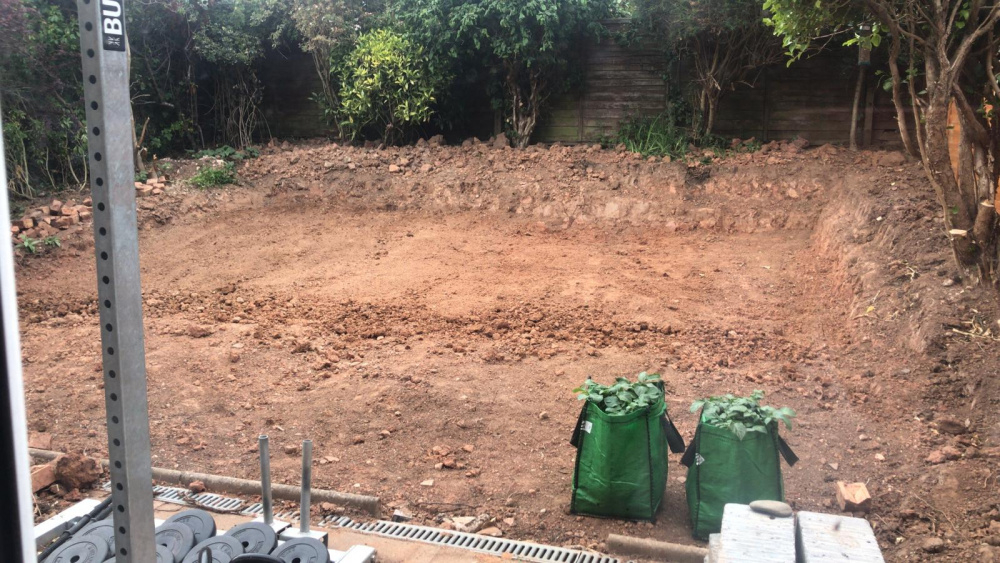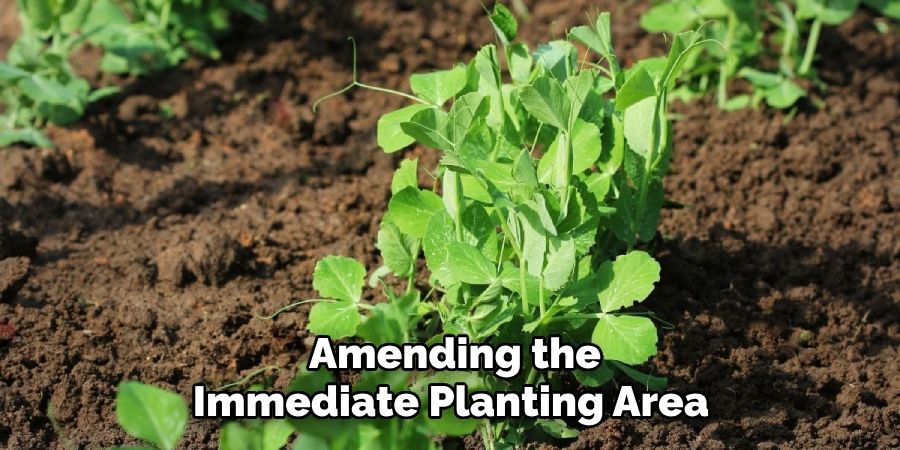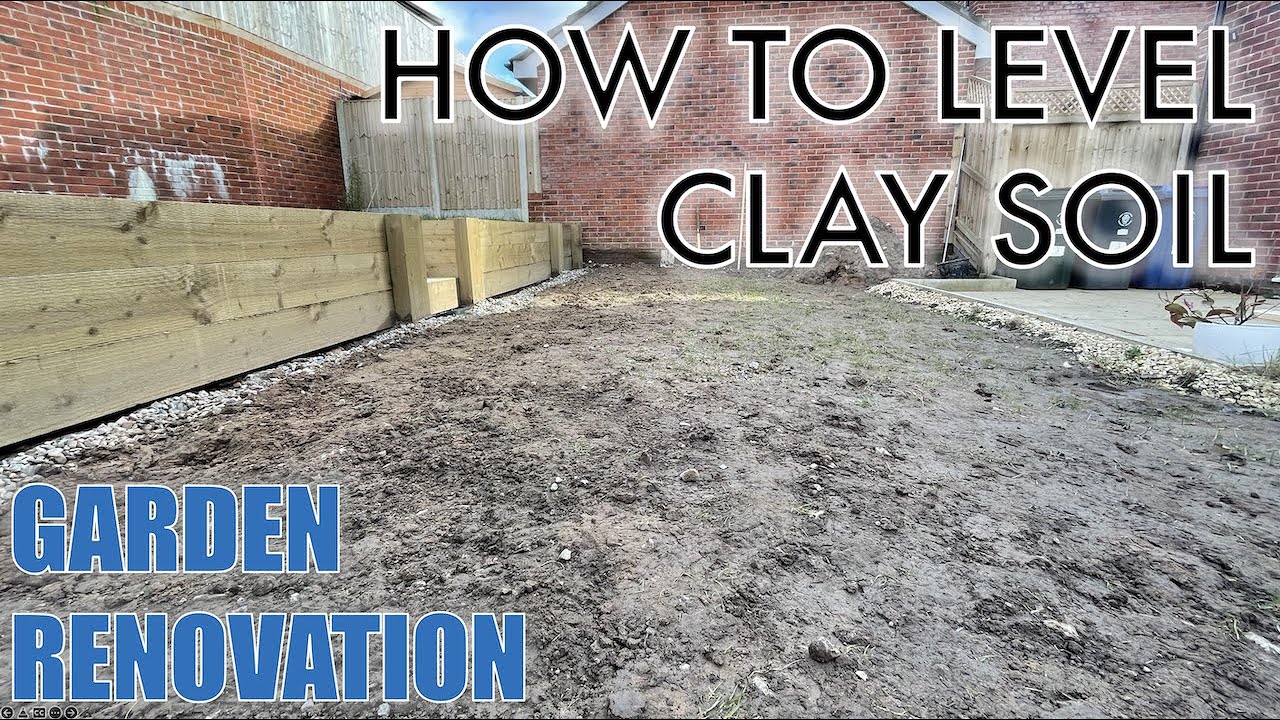To level clay soil, first, remove any existing vegetation and debris. Then, use a rototiller or garden fork to break up the soil.
Incorporate organic matter, such as compost or well-rotted manure, to improve the soil structure. Additionally, consider adding sand or gypsum to help improve drainage and reduce compaction. Having clay soil can present challenges when it comes to gardening or landscaping.
Clay soil tends to be heavy, sticky, and prone to drainage problems, which can hinder plant growth. However, with the right approach, it is possible to improve the quality of clay soil and create a more suitable environment for plants to thrive. We will explore some effective methods to level clay soil and enhance its structure. By following these steps, you can transform your clay soil into a fertile ground that supports healthy plant growth.

Credit: forum.gardenersworld.com
Understanding Clay Soil Characteristics
Clay soil refers to soil with high clay content, characterized by its fine texture and compactness. Clay particles are smaller than silt or sand particles, lending the soil its sticky and cohesive nature. These properties give rise to several challenges when working with clay soil.
It has poor drainage and becomes easily compacted, making it difficult for roots to penetrate. Clay soil also retains water for longer periods, which can lead to root rot and hinder plant growth. To level clay soil, you can improve its structure by adding organic matter like compost or well-rotted manure.
This helps to increase drainage, improve aeration, and enhance the soil’s ability to support plant growth. By understanding the characteristics of clay soil and implementing appropriate techniques, you can successfully manage and improve its fertility for thriving plants and gardens.
How to Level Clay Soil: Step by Step Guide
Assessing The Level Of Clay Soil
Assessing the level of clay soil is crucial before attempting to level it properly. One way to evaluate its texture is by conducting a soil texture test, which involves feeling the soil’s consistency using your fingers. Signs of compacted clay soil include difficulty in inserting a shovel or drainage issues.
To measure drainage and moisture retention, perform a simple test: dig a hole, fill it with water, and observe how quickly it drains or if it retains water for an extended period. Understanding these aspects helps determine the appropriate steps to level clay soil effectively for better gardening results.
With the right preparations and techniques, you can transform your clay soil into a healthy and productive garden bed. Expanding your knowledge on soil composition empowers you to optimize its quality for thriving plants.
Techniques For Leveling Clay Soil
Techniques for leveling clay soil include incorporating organic matter, adding sand or coarse materials, applying gypsum or lime, improving soil structure and porosity, tilling and aerating the soil, implementing raised beds or mounds, and installing drainage systems. By incorporating organic matter, such as compost or well-rotted manure, the soil’s nutrients and drainage can be improved.
Adding sand or coarse materials helps to break up the compacted clay, allowing for better water drainage. Applying gypsum or lime can help to neutralize acidity and improve soil structure. Improving the soil’s structure and porosity can be achieved by using a garden fork or aerator to loosen the soil.
Tilling and aerating the soil regularly can also help to prevent compaction. Implementing raised beds or mounds can improve drainage for plants. Installing drainage systems, such as french drains, can help remove excess water from the soil. These techniques combined can help level clay soil and provide a healthier environment for plants to thrive.
Guide To Level Clay Soil
Leveling clay soil requires a step-by-step approach. Firstly, clear the area of any obstacles and debris. Then, prepare the soil by removing weeds and moistening it. Next, implement leveling techniques such as using a rotary tiller or manual leveling with a rake or shovel.
Water and compact the soil to ensure proper leveling. Afterward, practice post-leveling care and maintenance by applying a top dressing and regularly watering and monitoring the soil. To further enhance the soil, incorporate mulch or ground cover. Following these guidelines will result in successfully leveling clay soil and creating an optimal environment for gardening or landscaping projects.
Maintaining Level Clay Soil
Maintaining level clay soil requires preventive measures for soil compaction. Heavy machinery should be avoided on the soil to prevent further compaction. Designing paths or walkways can provide designated areas for foot traffic, reducing soil disturbance. Proper irrigation and drainage practices ensure that the soil is not over-saturated or waterlogged.
Implementing techniques such as deep watering or drip irrigation can help prevent excessive surface water accumulation. Additionally, implementing drainage solutions like installing french drains or creating raised beds can improve water flow and prevent waterlogging. Monitoring soil health and fertility is crucial to identify any imbalances or deficiencies.
Regular soil testing allows for adjustments in nutrient management, improving overall soil quality. By following these practices, it is possible to maintain and level clay soil, creating an optimal growing environment for plants.
Tips For Successful Plant Growth In Clay Soil
Successful plant growth in clay soil requires careful selection of suitable plant species. Choosing plants with clay soil tolerance is essential to ensure their survival and thriving. Consider their water requirements before planting, as some plants may need more or less water than others.
Timing and preparation for planting are crucial for optimal growth. Implement proper planting techniques, such as creating planting holes and amending the immediate planting area. Mulching around plants helps retain moisture and prevents weed growth. Ongoing care and maintenance practices, including watering schedules, fertilization, and managing weeds, are necessary.

Pest and disease control should also be a part of your gardening routine. By following these tips, you can maximize the potential of your clay soil garden and achieve successful plant growth.
Frequently Asked Questions On How To Level Clay Soil
How Do I Level Clay Soil On My Lawn?
To level clay soil on your lawn, start by removing any rocks or debris. Then, add a layer of topsoil or compost and spread it evenly. Use a lawn roller or a garden rake to level the soil. Finally, water the area to help settle the soil and repeat the process if necessary.
Can I Use Sand To Level Clay Soil?
While sand may temporarily help with drainage, it is not recommended for leveling clay soil. Adding sand to clay soil can result in a compacted layer that creates drainage problems. Instead, focus on improving the soil structure by adding organic matter like compost or topsoil to help break up the clay particles.
How Long Does It Take To Level Clay Soil?
The time it takes to level clay soil depends on a few factors such as the size of the area and the condition of the soil. It can take anywhere from a few days to a few weeks to level clay soil properly.
It’s essential to be patient and regularly monitor the soil’s progress to ensure the desired leveling is achieved.
Conclusion
Leveling clay soil can be a challenging task, but with the right techniques and a bit of patience, it is definitely achievable. We have explored various methods such as adding organic matter, topdressing with sand, and aerating the soil to improve its texture and drainage.
The key is to assess your soil’s condition, understand its needs, and implement the appropriate solutions. By following the step-by-step guide provided in this blog post, you can make your soil more conducive to healthy plant growth and avoid common problems like water pooling and plant root suffocation.
Remember to regularly monitor the results and make necessary adjustments to ensure long-term success. With proper care and maintenance, your clay soil can be transformed into a productive and vibrant garden or landscape. Happy gardening!

